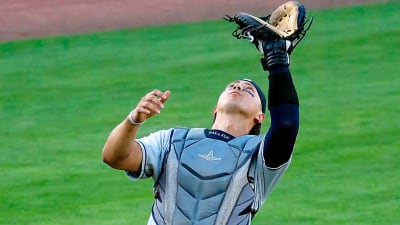
In the flamethrowing age of the MLB, pitchers are expected to throw harder than ever, and the aging art of painting a corner with a 95 mph fastball, followed by exceptional command of an off-speed pitch to get a strikeout, is over.
Throwing hard and often is what is wanted now. Pitchers of the generation before this, Chris Sale, Clayton Kershaw, and Max Scherzer, are all again out. So, surprisingly, when the Texas Rangers' ace this season was Nathan Eovaldi, you would expect it to be because he found his velocity again, except that isn't the case.
So how has he found himself at the top of the MLB ERA leaders, rivaling even the biggest names in the sport, such as Paul Skenes and Tarik Skubal? The answer wasn't a new pitch, but a refining of one.
Adapting To The Game
Eovaldi was a flamethrower in his own right during the 2010s, with his average fastball velocity hovering around 96-98. However, in 2022, it dropped below 96, and this season, it averages 94.1.
Despite finding success with it, limiting opponents to a .282 batting average, it still ranks worse than last season, when it was his most thrown pitch by over 200 pitches, and opponents hit 70 points lower for a .212.
So with a fall in velocity and a career high in opponents' exit velocity off the fastball, how does Eovaldi continue shaping his craft to remain effective and the dominant workhorse that the Rangers fans have become accustomed to over the last three seasons?
Enter—the Splitter.
The split finger has been a part of his arsenal since his debut in 2011, but he hasn't thrown it at the volume he has this season, becoming a member of the elite split-first starting pitchers.
His formidable fastball doesn't work at 94; it lacks velocity. His slider, still able to bend how he wants, has been phased out over the last few years after dropping in velocity as well. The curveball still works, but it's taken a vertical shape as of late, one that bends to be used to hit into the ground.
The splitter, though, has become his weapon. This is the reason his ERA starts with a one. Despite not qualifying for innings after missing the month of June with elbow inflammation, he is still viewed as one of the front-runners for the CY Young Award.
Since he arrived in Texas, Eovaldi has seen a meteoric rise in the use of the splitter. What used to be thrown twenty percent or less now is thrown over thirty percent of the time, and it's for good reason, too.
Opponents had their lowest batting average against it during his time with the Rangers, and they are hitting .190 against it this season. Maybe more impressively, he has a whiff percentage of 36.4 percent, which has become his main put-away pitch this season.
What Makes It Effective?
In addition to the whiff percentage nearly touching 40 percent, the lack of velocity actually helps Eovaldi's splitter, minimizing the spin and allowing it to drop as needed.
He gets nearly an inch of non-gravity-induced drop, which, paired with his low-slot release, has proven effective this season. Part of the allure is that while he has raised his percentage of splitter use, he still has a six-pitch arsenal, keeping hitters on their toes.
With precise location, landing nearly every thrown splitter at the bottom of the zone, or sometimes right below, generating a whiff, the accuracy plays into his release, making the spin seemingly 'fall off a table'.
Despite his shortcomings in velocity, the further development and trust in his splitter has led to some of the highest chase percentages in his career, his second-highest whiff percentage, and he still maintains his ability to live in the strike zone and limit his free passes as he has done his whole career.
While the days of blowing a fastball that nearly touches triple digits by opponents are over, Eovaldi is proving that when the game changes, you can as well. The twilight of his career is approaching, but the split, and Eovaldi, have never been better.
More must-reads:
- Kyle Tucker booed at Wrigley Field for not hustling
- Has Cal Raleigh overtaken Aaron Judge in MVP race amid Yankee slugger's slump?
- The 'Most multi-HR games by MLB team' quiz
Breaking News
Trending News
Customize Your Newsletter
 +
+
Get the latest news and rumors, customized to your favorite sports and teams. Emailed daily. Always free!








